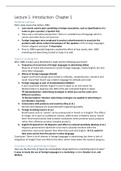Summary
Summary Foreign Languages in Advertising IBC Radboud University
- Course
- Institution
- Book
This is a summary of all lectures and the chapters for the Foreign Languages in Advertising course. I was able to get an 8 with the summary.
[Show more]



